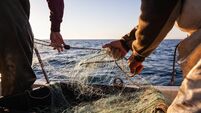Tystie treat as auks try the inner city
THE lower reaches of the Liffey, with their infamous whiff, would not seem an attractive place for wildlife. However, while walking along the quayside past Gandon’s Custom House last year, I noticed some birds on the murky water. On closer inspection, they proved to be what are known as ‘tysties’, unlikely visitors to the heart of a city.
Something must have led these seabirds astray, I thought, that they ended up in such an unsuitable location; they would soon see the error of their ways and be off to more appropriate waters. But I was wrong. Each time I visit the stretch of the Liffey just downstream of Butt Bridge, tysties are present. There were a dozen of them there last Wednesday.














